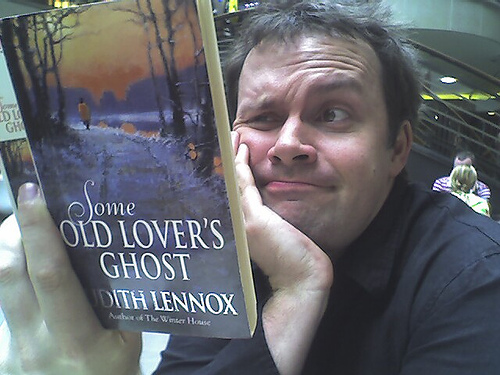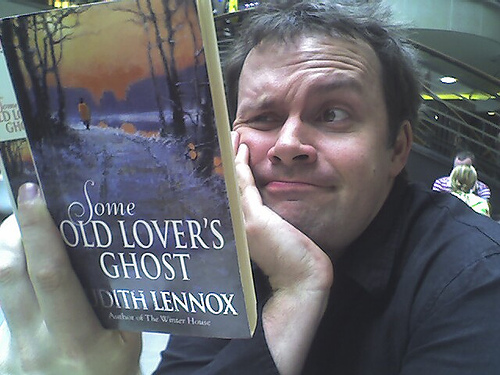Send your question to Umbra!
Q. Hi Umbra,
I’m in the book business, and there are many who try and make sure books never make it to landfills and are donated to worthy causes. However, I have been wondering for some time about the environmental impact of such authors as Danielle Steel, Nora Roberts, and Tom Clancy, whose books quickly become worthless, and how they feel about their environmental impact, and what if anything they are doing to improve the clearcutting they might be causing? Just a thought.
Joe Hoppe
Austin, Tex.
A. Dearest Joe,
Is this misplaced blame? They are in the book business, you are also in the book business. They write books, you sell or collect or ship or edit or in some other way earn your living off of books. Like it or not, you and Danielle Steel have a mutual interest in the success of and continued circulation of books. And you also share a mutual responsibility for urging the book industry to be more eco-minded.
 Your plots are delicious, but your eco-impacts suspicious.justin via flickrI looked into the authors you mentioned whose books “quickly become worthless.” All three have engaged in various philanthropic causes, mostly involving children’s health. I don’t see any obvious messages about clearcutting coming from them, although Nora Roberts has done a bit of donating to Defenders of Wildlife. And Tom Clancy wrote Rainbow Six, involving terrorist environmentalists! From the Wikipedia summary: “After living in sealed redoubts … and protected by the secret ‘B’ vaccine, they will come out to rebuild the world in an environmentally friendly way.”
Your plots are delicious, but your eco-impacts suspicious.justin via flickrI looked into the authors you mentioned whose books “quickly become worthless.” All three have engaged in various philanthropic causes, mostly involving children’s health. I don’t see any obvious messages about clearcutting coming from them, although Nora Roberts has done a bit of donating to Defenders of Wildlife. And Tom Clancy wrote Rainbow Six, involving terrorist environmentalists! From the Wikipedia summary: “After living in sealed redoubts … and protected by the secret ‘B’ vaccine, they will come out to rebuild the world in an environmentally friendly way.”
Sounds exciting! What may be more exciting, in light of your question, is some of the progress the book industry is making. The industry, like all others, contributes to global warming and other environmental problems. Glancing over at our friend the Carnegie Mellon EIO-LCA database, we find that for every million wholesale dollars of book printing, 717 MT of CO2 equivalent are produced. We also know that 30 million trees are used to make books sold in the U.S. each year.
So what are some of the steps publishers are taking? Random House, which publishes Steel’s novels, has committed to increasing its use of recycled paper from 3 percent to 30 percent by 2010. Penguin, which publishes Clancy’s and Roberts’ work, has an even more substantial-seeming green effort, which includes using FSC-certified paper, publishing work by environmental-minded authors, partnering with various green groups, and taking concrete steps to green its in-house business. Then, of course, we have electronic publishing, which is taking the trees out of the equation; as I have written before, e-books may be the greener option — and your authors have made their work available in that format.
That is good news. But more to the point, I do not share your concern about the obsolescence of popular literature. I’d particularly like to direct you away from the idea that bestselling mainstream books quickly become “worthless.” There is a reason that Steel and her ilk have sold millions and millions of books: People like to read them. Not just once, but again and again. My small window into vacation homes, library book sales, airplane and bus reading, shows that it is these very books that are repeatedly proving their worth. Perhaps not monetarily — and maybe this is where your gripe comes in — but certainly as reading material. It’s the intellectual stuff that weighs down the table at a yard sale.
I say not to worry. Unlike many other manufactured objects — cell phones spring to mind — books are endlessly reused. Paperbacks have two great benefits: they are easily recyclable alongside old phonebooks. And they are highly portable. After all, no one is going to take their leatherbound copy of The Mill on the Floss to the beach.
Relaxedly,
Umbra




